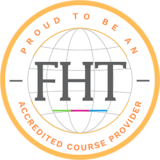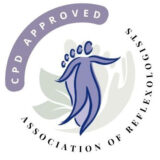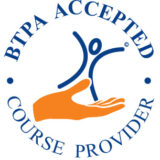Reflexology is a natural therapy applied on the body, the most popular area are the feet and hands. A reflexologist will train for at least a year to learn to use the specialised thumb and finger movement in a sequence or routine and learn all about the body including anatomy and physiology. Reflexology is thought to have ancient roots- where drawings on the walls of the great tombs in Egypt depict the physicians tomb – a man standing at the foot of a patient, were it possible that he was carrying out a foot reflex treatment?
In the 1920s a physiotherapist called Eunice Ingham, was researching the work of Dr Fitzgerald in the USA, for research in natural anaesthetic through pressure and grip on the toes and fingers producing a numbing sensation. Eunice also found that when pressure was applied to various other areas on the feet the person receiving it felt stimulating as well as calming sensations in their body. She was able to produce a map of the body parts felt on the feet and hands, calling them reflexes and reflex zones, the study of them reflexology. In 1938 she wrote a book entitled; Stories the feet can tell, which promoted reflexology and she began to teach about her ideas. Those interested in this new art travelled from the United Kingdom to the USA to learn and return to teach it. Doreen Bayley was one of the first pioneers to introduce the concept in the early 1960s. A school of reflexology started in 1978 still in existence today, run by Nicola Hall and the subsequent British Reflexology Association started in 1985. Dwight Byers, nephew of Eunice Ingham set up the International Institute of Reflexology with his aunt travelling around the world to teach as he still does today. Tony Porter, one of his pupils qualified in 1972 and became director of the UK branch, now teaches an advanced reflexology technique (ART). The Association of Reflexologists (AoR) was formed in the early 1980s and Helen was taught by Isobel Taylor in 1986 one of the early members, who had been a pupil of Doreen Bayley. Helen attended weekend courses at the school in London. She returned to Peterborough one of only two reflexologists in the city and quickly gained a respectable clientele who enjoyed this newly acquired skill to add to her established massage therapy practice.
Reflexology is believed by many to help maintain health by gentle stimulation of the nerve endings on the feet. By rubbing or holding the feet, messages are sent along the nerves that reach the internal systems of the body. Other lines of communication are via Reflex Zones said to run vertically up the body from each toe and meridians from the Chinese Element principles that link energy pathways via the major organs. Recent research of the connective tissue or fascia that surrounds all parts of the body is said to resemble a web or communication network that could be tapped by reflexologists, rather like the old telegraph communication mechanism.
Armed with all this information Helen started her new therapy with passion and soon her clients were finding relief from conditions such as digestive disorders, arthritis, asthma, sinusitis, headaches, hormone problems, back ache as well as a feel good factor from their feet. As Helen progressed she was told by her clients that she had a knack of finding sore areas in the feet and easing them effectively. Helen often felt tingling in her hands as she moved over certain areas, knowing in some intuitive way where to place them and what pressure to apply, whether deeply or lightly. She began to experience more physical feelings of heat and coolness, together with varying depths of a tingling sensation regardless of whether her hands were touching the client. These feelings appeared to be two-way, radiating outwards from the client as well as moving from Helens hands to the client. She spoke with her teacher, who explained that what she was experiencing was an awareness of the energy fields that emanate
When she arrived back, she fulfilled a lifelong ambition to work in a hospice and became the co-ordinator in the local Sue Ryder day care centre providing a therapy service to its members. Helen carried on collecting case studies where she used her vocals most of the patients enjoying the unusual reflexology sessions with voice work, saying that often they needed to make the sounds themselves to release emotions or to help them to feel better. Helen completed training to teach at FE colleges and also taught nurses about complementary therapies as part of their training and ongoing awards within the community, elderly care, cancer care and coronary care. Her reflexology courses became accredited and these remain with the Association of Reflexologists (AoR), the Federation of Holistic Therapists (FHT) and The Complementary Therapists Association (CThA.) Helen has been a director on the board of the Association of Reflexologists, has her own private practice, is available as a speaker about complementary therapies and teaches anywhere by arrangement. She is writing a book about using intuition and sound with reflexology and writes articles and news stories for her website. Visit www.helenperkins.com for more information and diary dates.
Sources
British Reflexology Association www.britreflex.co.uk
Association of Reflexologists (AoR) www.aor.org.uk
International Institute of Reflexology www.reflexology-uk.net
Advanced Reflexology Technique (ART) www.artreflex.com
Advanced Reflexology Seminars www.touchpoint.dk
Better Health through Foot Reflexology- The Original Ingham Method book by Dwight Byers
The Art of Reflexology (using the Chinese Meridian Theory) book by Inge Dougans
Strolling under the Skin DVD about fascia by Jean-Claude Guimberteau





